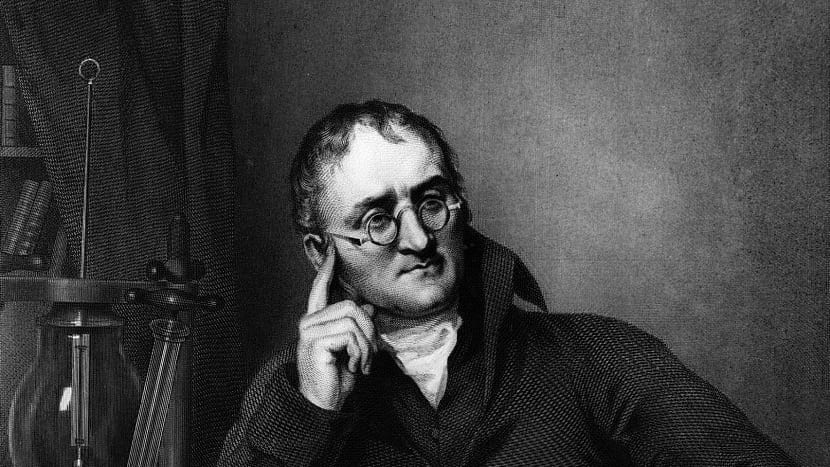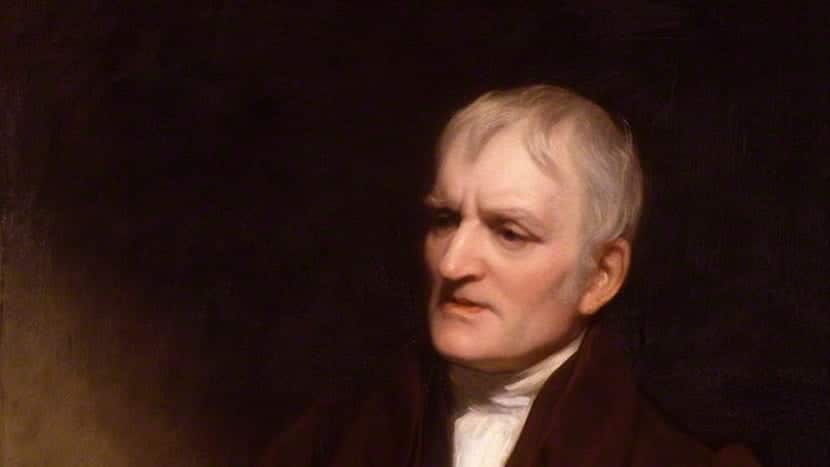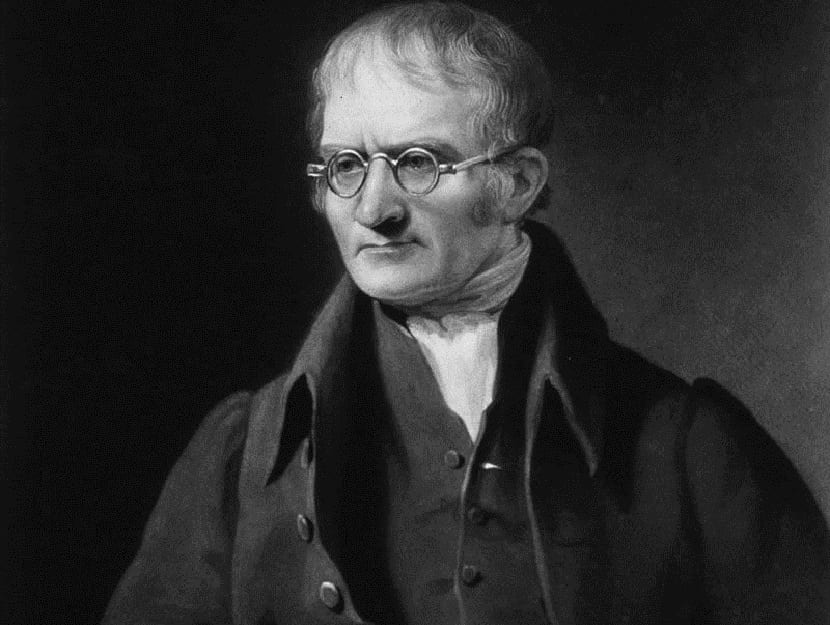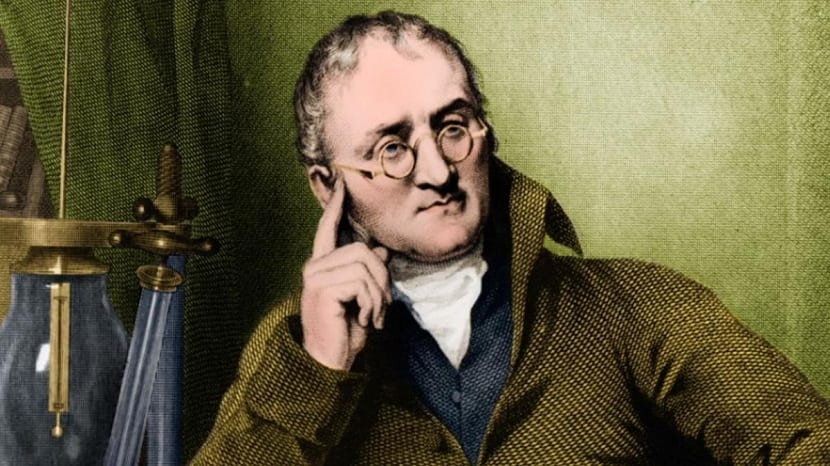
Today we come with another biographical article by one of the most important scientists who helped science to be what it is today. We talk about John dalton. He is a chemist-physicist and meteorologist who developed the modern formulation of the theory of atoms. This man did not receive much instruction or education, but his eagerness to know everything made his training improve a lot.
In this post you can learn about all the exploits of John Dalton and his story from beginning to end. Do you want to know more about him? Keep reading.
Biography

His early scientific works dealt with gases and a visual disease he had, which was called color blindness in honor of its name. It is the disease that makes you not recognize certain colors within the visible spectrum.
Once recognized as a scientist, he built a solid position in academia. After so much research, he discovered what we know as the Law of Multiple Proportions. It is the law that explains the weight of the elements involved in a chemical reaction. From there he was able to establish a theory about the constitution of matter and was called Dalton's atomic model. This scientific model was in force throughout the nineteenth century and thanks to it great advances could be achieved in the world of chemistry.
All these discoveries have led him to be one of the fathers of chemistry.
Teacher and researcher at the same time

John Dalton had these two jobs at the same time. Both gave him an important notoriety and a much higher economic situation to be able to dedicate himself fully to his tasks. In 1802, he established the law of partial pressures (known as Dalton's law) in a memoir that was titled Absorption of gases by water and other liquids. This theory established that the pressure that a gas mixture has is equal to the sum of the pressures of each component.
Apart from this, Dalton established a good relationship between the vapor pressure of the gases and the temperature. With this it is known that, as the temperature of a gas increases, so does the pressure it generates in a closed space. In this way and with these principles, the kitchen utensil that we know today as the pressure cooker works.
His interest in gases is due to a huge hobby he had in meteorological studies. He always carried the apparatus with him to be able to measure atmospheric variables. He loved to know the atmosphere and would write down all the observations he made in his journal. Thanks to this curiosity, John Dalton has brought many advances to science.
Law of multiple proportions

Already in 1803 he began to formulate what would be his greatest contribution to science. So far it is not that he did less, but this is what would make him advance more. It all goes back to one of his days when he was in his laboratory studying the reaction that nitric oxide has with oxygen. It is at this time that he discovered that the reaction could have different proportions. Sometimes it could be 1: 1,7, other times 1: 3,4. This variation in the proportions was not something that he could understand well, but thanks to it he was able to see the relationship between all the data and establish what the Law of Multiple Proportions has been.
This law says that in a chemical reaction, the weights of two elements always combine with each other in whole number ratios. Thanks to this interpretation, he was able to begin to realize the first principles of atomic theory.
The results of this research were very good and were communicated orally that same year. After years of writing, in 1808 his most famous work was published in a book. The book was named New system of chemical philosophy. In this book you can collect all the main notions of atoms and the different postulates of the constitutive theory of matter that we know today as Dalton's Law. For further interpretation, he drew some individual particles so that, through illustration, people could better understand how chemical reactions worked.
Apart from all this, he was able to publish the first list of atomic weights and symbols that today are part of the periodic table. Unsurprisingly, not the entire scientific community approved of Dalton's theory.
End of his career
In 1810 the second part of the book was published. In this part he provided new evidence about his studies empirically. In this way he was able to show that his theory was correct. Years later, in 1827, The third part of his theory came to light. Dalton recognized himself as a teacher and not as a researcher. Although he was a member of the Royal Society from 1822 and won a medal from this scientific society in 1825, he always said that he made a living by giving classes and lectures.
Given all his exploits throughout his life, in 1833 he was awarded an annual pension. The last years of his life were spent in retirement and on July 27, 1844 he died of a heart attack. At Dalton's wish, an autopsy was performed to recognize the cause of his visual disease. Years later it was recognized as color blind.
It was known that the disease was not a problem in the eye, but a problem caused by some deficiency in sensory power. Thanks to all the feats and his great contribution to science, he was buried with monarch honors in a large funeral attended by more than 400.000 people.
As you can see, John Dalton was one more scientist who manages to advance and contribute in the world of science thanks to the curiosity and perseverance of his research. What this makes us learn about the importance of dedicating ourselves to what we really like and that our lives revolve around it.